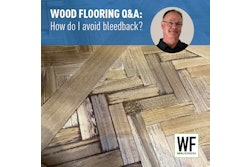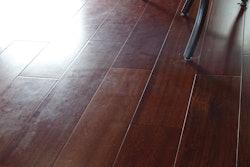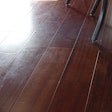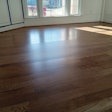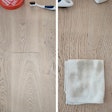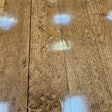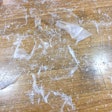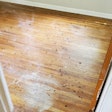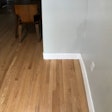Damage Control
I have a customer blaming me for nicks in her wall that had an expensive faux finish on it. Now she wants me to pay for repairs, even though I think the damage was already there. Do I have to pay for this?
Frank Kroupa, senior director of technical education at the National Wood Flooring Association, answers:
This is a tough situation. When you start a new job, one of the first things you should do is note any damage already in the house-either by writing or, ideally, by taking photos. Since this is now after the fact, you're looking at a case of he said/she said. On this job, it may be that you simply aren't going to get paid unless you come to some sort of compromise about fixing it.
In the course of doing someone's floors, there are endless ways we can damage their house or the things in their house, so you can't be too careful about protecting the job site and protecting yourself from getting blamed. Over the years we've killed birds, plants and coral with finish fumes. Once on a large 7,000-square-foot job I went around and undercut every single door jamb on the first floor, only to realize once the security contractors showed up that I had cut every one of their wires (it cost somewhere around $6,000 to fix). I had a job once where my guy sanded the wood floor and also accidentally sanded about 6 inches into the soft stone entryway (that worked out alright because I offered to sand the rest of the entry to match, and the homeowner was thrilled!). I was also on a job once where one of the guys spilled a can of finish down the stairs that had a carpet runner on it. The carpet guy wasn't there but his roll of carpeting was, so the wood floor guy reinstalled a new runner without the carpet guy knowing it! (No, I don't recommend stealing other trades' materials.)
I did hear of one case recently where there was damage to a customer's house and the wood flooring contractor didn't have to pay for the repair. In this case, the contractor was in an older house and hit a water pipe through the subfloor. As it turned out, he was able to get the homeowner's insurance company to pay for the repair because the pipe had been laid incorrectly and shouldn't have been where it was without a protective guard in the first place.
Impregnated Refinish
We are bidding to refinish the wood floor in a big store at our local mall. They say the floor is acrylic impregnated. Can I really refinish that?
Jason Brubaker, VP of sales & marketing at Alpharetta, Ga.-based Nydree Flooring, answers:
Yes, you can. There are often misconceptions that site-applied urethane finish will not stick to acrylic impregnated flooring, but that simply isn't true. Older acrylic impregnated floors typically had a linseed oil topcoat finish or a UV-cured urethane finish; newer acrylic impregnated flooring has a UV-cured 100 percent solids urethane with aluminum oxide. Any of these floors, whether they are the older oil-finished product or the newer aluminum-oxide flooring, can be screened and recoated. One important difference is that in this case, you need to screen off all the topcoat finish so that you are down to just the acrylic impregnated surface. And be sure to follow the manufacturer's recommendations for which finish to use (waterborne urethane finishes for high-traffic areas are typically recommended).
One thing you can't do with many acrylic-impregnated wood floors is resand them with a drum sander. Older solid acrylic impregnated floors can be sanded, but newer products with thinner wear layers can't. Although it is harder to sand through the veneer of an acrylic-impregnated floor than it is with a typical wood floor, the wear layer is still too thin for drum sanding.
Sudden Streaks
I just completed a job where I coated with a waterborne finish I've used before. Along the patio doors, the customer is complaining about streaks in the finish. Why would I suddenly have applicator streaks?
Hedgesville, W.V.-based wood finishing consultant Mike Sundell answers:
Streaks happen when you use an applicator or a technique that leaves these blemishes in the finish. They are made worse by fast setting conditions. For example, if the wood flooring in front of the patio doors was hot from having sunlight on it, the heat can "cook" the finish, causing it to set too quickly. Some things to keep in mind to prevent streaks are:
• Make sure all applicator pads are clean and soft all over; even a couple of hard hairs can leave distinct lines in the finish.
• When the sun is shining onto the floor, cover the window or coat when the sun is not on the floor.
• To prevent air movement, close up the area where you're coating. After the finish has flowed correctly, ventilate the job site.
• Be careful with your applicator technique. When using a T-bar applicator, do not lap over more than 2 inches under fast setting conditions. Never leave lines across grain where possible, and apply the finish heavy enough that the finish stays wet long enough to flow out on the floor.














